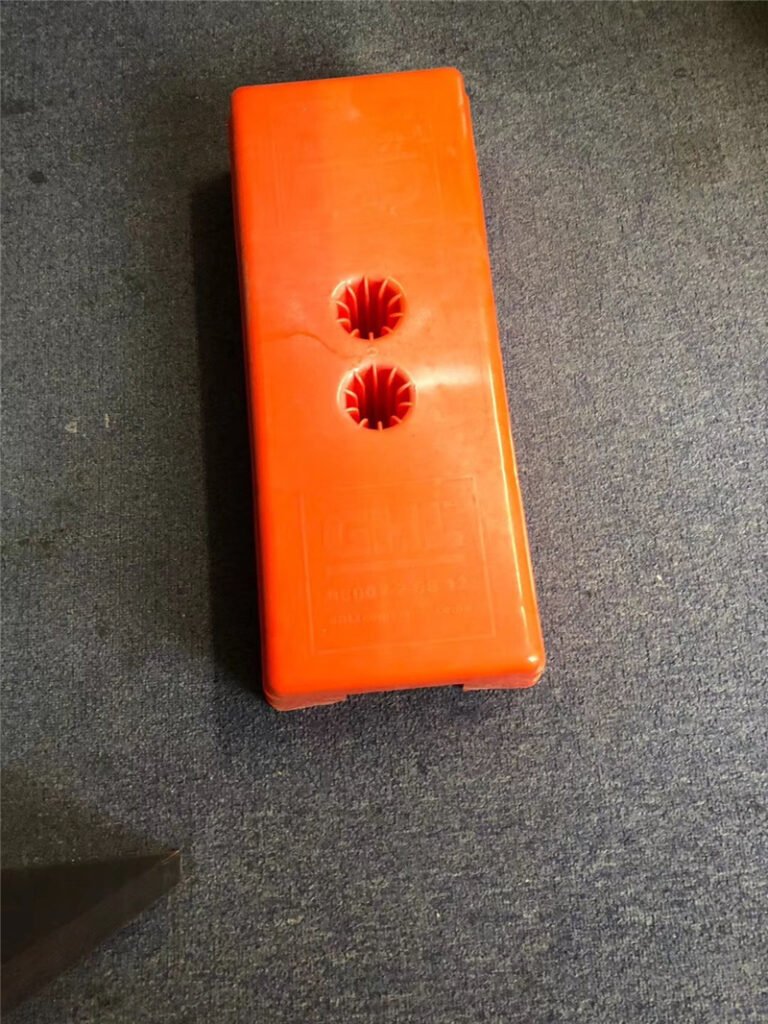Popular Temporary Fence Blocks
DB Fencing has a lot of temporary fence blocks like the following M type and S type.

M Block 
S Block
When DB Fencing produces temporary fence bases for local companies or construction companies of Australia and New Zealand, they tend to use these 2 styles of the block. The S block is the most commonly used block in Australia.
The Advantage Of Temporary Fence Base – M & S Type
Though The M and S blocks are so popular, but this does not mean it is the best, it is just sold in major hardware stores and this is why it is most popular. It is great for home handymen and builders as it is small and a bit lighter (approx 28 kg). The good aspect of both blocks is that they slide easily on install and if they break, the concrete stays internal.

When we install, we layout blocks first and then put panels in. The easiest way to do this is to put the panel in the empty block and drag it towards the empty hole in the block that already has one panel in it. The M and S blocks slide well.

The Disadvantage Of Temporary Fence Base – M & S Type
The disadvantage with these blocks is that when they are on uneven ground, the angle of the side pipes means that the top pipes move apart and you cannot get a clamp on them. In this instance, you have to twist a block and put the pipes in the wrong holes (which reduces its stability) or pop a panel out of a block to get a clamp onto the other end and then push the other panel back in. Sometimes on a site, a client tries to help…it often takes longer if the client’s help as they don’t check the tops of each panel installed to ensure that a clamp can be put on. If we then have to go back and take panels out to make sure we can get clamps on, it adds a lot of time. This is one of the reasons that we are moving to blocks with inline holes.
There is more tolerance for undulating ground. The other reason we are moving to inline holes is that we were finding that some clients had a problem with the gap between our hoarding panels when we have holes like the S and M blocks. The inline holes close this gap.


M-Inline Temporary Fence Block Installation 
M Temporary Fence Block Installation 
S Temporary Fence Block Installation
The Main Problem Of S & M Type Blocks
The main problem with all of the blocks shown above is that they have to be stacked vertically on top of each other on pallets. This leads them to be inherently unstable. DB Fencing would not want a forklift to lift them above head height, With injection-molded feet, you stack one row one way, and the next row is all stacked at 90 degrees.
They lock in really well and are very stable to transport. The M shape blocks are a bit wider and have to be very well packed if storing them on an 1165mm x 1185 mm panel.

If they are not well stacked, They topple off the pallet when being moved by the forklift. The two other issues with them for professionals who store them on pallets is that you can only stack the M and S blocks two pallets high because the shape of the blocks does not allow for an even spread of the load on the timber on the bottom of the pallet – it concentrates it in a couple of spots and the pallet bottoms break.

The final issue for professionals with these styles of blocks is that because they interlock with each other when you are standing next to a truck about to unload them, you cannot lift them straight up as it is too risky on your back and you cannot slide the block towards you because they are interlocked so the installers have to tip the stack towards them.
This breaks a lot of pallets and creates a risk of a block falling on someone’s foot. These reasons are why we have moved to the inline injection molded feet.

Flat Surface 
Bottom View
The best block we have seen is the block like the following picture. If the concrete breaks, it stays in the foot, you stack them in layers in opposite directions providing stability of the blocks on the pallet and they stack flat so you can stack them 3-4 pallets high.

Yes – as ugly as that block may seem…to a professional company such as ourselves it is a thing of beauty. Easily stacked, concrete does not fall out when it breaks because of the plastic bottom. Slides easily across the ground. Deals with uneven ground. The concrete on top grips the other blocks when stacked and strapped for additional stability. stacks are flat and you can stack pallets 3-4 high. It is the most practical and best block any fencing companies in Australia are using.










